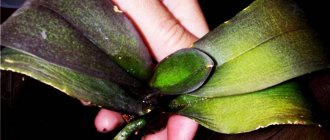Gardeners grow many plants, and among them is foxglove. This is an unpretentious and long-flowering ornamental biennial. It has also become widespread in floristry thanks to its unusual multi-flowered pyramidal inflorescences. Growing this crop on your own plot is easy if you follow certain rules.
Description of foxglove purpurea
We are talking about a plant that reaches 30–120 cm in height. Thimble grass has evenly spaced foliage that is dark green and velvety with glandular hairs. Below they are wide and long, ovoid and pointed, and the upper ones are 2 times smaller - short petiolate and sessile. In June-July, the plant throws up a long pyramidal brush, on which ruby and, less often, white corollas are located.
Below on the inner surface there is a spotted decoration. The opening of the corolla tube is almost completely covered by multiple protruding hairs. The stamens are bare, but the ovary is characterized by the presence of glandular pubescence. At the end of the season, a capsule with small brown seeds ripens. The plant is widespread in European countries and North Africa.
Foxglove purpurea - characteristics
Among the characteristic features of this plant are:
- Decorative use is widespread in gardening and floristry.
- Biennial.
- Belongs to the Plantain family.
- Foxglove purpurea has flowers collected in a pyramidal oblong raceme.
- Covered with regular and glandular hairs.
- Unpretentious and frost-resistant.
- It is used as a medicinal raw material for cardiac and other diseases.
Is foxglove purple a poisonous plant or not?
The plant contains cardiotonic glycosides, which give the leaves and stems a bitter taste. When used correctly and in dosage, the flower can be beneficial, but if used in excess, it will act as a poison. The concentration of such substances is strictly individual and depends on the place of growth, weather conditions, soil quality and other factors. According to experts, the poisonous foxglove purpurea can be fatal to humans in a dose of 2-3 dried leaves. You need to prepare decoctions and infusions from it yourself with great care.
Dangers to digitalis: diseases and pests
Although the plant does not get sick often, however, if there is no care or changes in weather conditions, it can be affected by a fungal or bacterial infection. Thus, the lack of water drainage from the roots leads to the appearance of gray rot, or, for example, powdery mildew.
They can be recognized by plaque and spots on the leaves. If fungus occurs, treat digitalis with a fungicide.
If a plant is severely infected, the infected plant should be removed and burned to preserve other flowers. Speaking about garden pests, we should mention the sucking insect - aphids. It parasitizes the plant, causing the flowers to dry out.
There are a number of systemic insecticides that help defeat pests in the garden (for example, Iskra).
Foxglove is a popular garden plant whose leaves are used for medicinal purposes. Due to the chemicals it contains, digitalis should be grown with great care and caution.
Varieties of foxglove purpurea
There are many varieties of this plant that are very popular among gardeners. These include:
- Foxglove purple Dalmatian White
. Named for its white buds with small purple spots. Grows 80–110 cm in height. It has straight, strong stems, oblong, juicy, green foliage. The flowers look like bells that appear in June-August. This plant has strong immunity and drought resistance. - Foxglove purpurea Excelsior
. This species is the tallest. It reaches 150 cm in height, standing out in the flowerbed among other ornamental plants. The buds have a hue ranging from purple to lilac and pink. This biennial is frost-resistant and tolerates cold and snowy winters. - Red dwarf
. This variety fully justifies its name, as it does not exceed 35 cm in height. It is named red due to its bright, richly colored bloody buds. Its inflorescences are large and remarkable. Prefers well-lit, sunny places.
Types and varieties
There are 11 known species of the genus Foxglove. There are 3 most common types in our country:
- grandiflora (Digitalis grandiflora);
- purple (Digitalis purpurea);
- woolly (Digitalis lanata).
Purple
In gardens you can often find purple foxglove (Digitalis purpurea). It is also found naturally in forests, bushes, mountains, and meadows.
The species is included in the group of the most poisonous plants found in our country.
It is a short-lived perennial and is grown as a biennial. The leaves are located in a straight line, quite long - up to 25 cm. The insides are covered with delicate hair. From a dense rosette of green leaves grow long (1-1.5 m) shoots-peduncles, overgrown with large bell-shaped flowers with a spotted throat. Blooms in May-June.
The most famous garden variety is Digitalis purpurea var. Gloxiniaeflora - Digitalis purple Gloxiniaflora or Gloxiniaflora. It has exceptionally large flowers.
The plant is a honey plant, the honey harvest is 200 kg/ha.
The most interesting varieties of this species (Purple) are presented below.
With white flowers:
- “Virtuoso White” Virtuoso White – height 1-1.5 m, ideal for flower beds with tall plant species.
- "Anne Redetzky" Anne Redetzky - white flowers, with jagged ends, bush height - 0.6-1 m; It is better to plant in medium-sized flowerbeds.
- "Pam's Choice" Pam's Choice - white flowers with large burgundy spots inside the crown, height 1.2-1.5 m.
- "Elsie Kelsey" Elsie Kelsey.
- "Camelot White" Camelot White.
- Pam's Split.
- "Snow Thimble" Snow Thimble.
With pink flowers:
- “Virtuoso Rose Compact” Virtuoso Rose Compact – 1 m high.
- "Lavender Camelot" Camelot Lavender.
- "Camelot Rose" Camelot Rose.
- “Red Virtuoso” Virtuoso Red - dark pink flowers with a light spot inside the crown, 1 m high.
- "Sugar Plum" Sugar Plum.
Large-flowered
Digitalis grandiflora (Digitalis grandiflora) is a long-lived perennial plant that tolerates the winters of central Russia well and grows in southwestern Siberia. Reaches a height of 60-120 cm, produces many shoots. Flowers up to 5 cm long are yellow, brownish-network inside, collected in one-sided clusters. Flowering: June-August. Prefers soils rich in calcium, not too wet.
Popular varieties:
- "Carillon" Carillon - pale yellow flowers.
- “Laj yellow” Large Yellow – dense oily yellow inflorescences.
- "Cream Bell" Creme Bell - cream-colored flowers.
Woolly
Foxglove (Digitalis lanata) is grown primarily as a medicinal plant. In our climate it is treated as a biennial because the flower dies after it produces seeds. Tolerates frosts well. Caramel, small flowers and a dense rosette of pointed leaves combine beautifully with rustic flower beds. Flowering period: June-August.
An extremely decorative variety of Digitalis lanata - “Cafe Cream” with abundant inflorescences consisting of cream flowers with a coffee pattern inside the neck.
Yellow
Yellow foxglove (Digitalis lutea) is a perennial herbaceous plant common in Europe. Height: 30-120 cm. Flower color: yellow. Leaves are elongated. Characteristic feature: the stem is erect and bare, with slightly ciliated leaves growing on it. The flowers inside do not have brown veins and are collected in a one-sided circle.
All parts of plants contain highly toxic substances that are dangerous to humans.
Where to plant foxgloves?
This unpretentious plant can be planted even where other crops begin to wither. The sunniest and brightly lit areas are the favorite place of foxglove purple. She won't mind even a little shade. Under fruit trees and various shrubs, red foxglove does not feel very comfortable. It is too dark and damp here, and falling leaves will cover the plantings and contribute to rotting. The crop is not planted in wetlands, where groundwater lies close.
Foxglove after flowering
Proper planting and care guarantee good growth rates of digitalis and timely flowering, however, after it you should not neglect caring for the perennial.
Due to the superficial location of the root system, there is a high probability of partial exposure of the root. To avoid this, especially in autumn, you should sprinkle the foxglove with a small layer of soil.
Quite a few varieties are notable for their resistance to low temperatures, but if there is little snow in winter, the plant runs the risk of freezing. It would be a good idea to cover the outlet with sawdust or leaves. Covering for the winter is especially important for young foxgloves.
Seeds can be collected after the seed pods are fully ripe, which must be removed before they begin to burst. The seeds must first be dried in a well-ventilated room, then stored in paper bags and left in a dark, dry place.
Foxglove purpurea - planting
When the soil in the garden has warmed up well and the threat of frost has passed, the foxglove can be planted for permanent residence. This procedure is carried out in several stages:
- The area should be dug up.
- Add compost at the rate of 4–5 kg per m².
- Make holes in the ground based on the size of the rhizome. The distance between them should be 20–25 cm.
- Handle digitalis purpurea along with a lump of earth.
- Cover with soil and compact.
- Water the plants generously.
Side effects and contraindications to the use of foxglove purpurea
With an overdose of digitalis purpurea preparations or with too long use of therapeutic doses, severe poisoning can occur, which is based on the selective effect of cardiac glycosides on the heart.
We recommend reading: Medicinal properties and contraindications of wintergreen, how to use
The main symptoms of poisoning with cardiac glycosides: a sharp slowdown in the pulse, the occurrence of polytopic extrasystole, bigeminy. The appearance of bradycardia or single pulse loss, as well as paired extrasystoles (“digitalis bigeminy”) requires immediate discontinuation of the drug in order to avoid complete atrioventricular block. Sometimes with an overdose of digitalis, nausea, vomiting and decreased diuresis are observed.
For toxic phenomena, the use of potassium chloride, atropine, caffeine, and unithiol is indicated.
Contraindications to the use of digitalis: coronary insufficiency (especially with sclerosis of the coronary vessels of the heart), acute myocardial infarction, severe bradycardia, complete atrioventricular block, active endocarditis and rheumatic carditis (risk of embolism). Digitalis is not indicated for compensated heart defects.
Digitalis preparations should be prescribed with caution for aortic defects (especially stenoses) accompanied by persistent bradycardia. For bradycardia that develops from small doses of digitalis, the drug can be prescribed together with belladonna.
Foxglove purpurea - care
Caring for crops involves the following activities:
- Foxglove purple needs timely loosening of the soil and watering.
- Wilted buds need to be removed.
- If you want to collect the seeds of the inflorescence, you need to tie it with gauze.
- Fertilize with fertilizers.
- The Digitalis plant blooms profusely if weeds are removed along with the roots in time.
- Mulching is necessary during dry summers. For this purpose, peat or sawdust is used, covering the ground with a layer of 1 cm.
- Cover the roots that appear on the surface with soil.
- Overgrown specimens should be thinned out.
Watering foxgloves
High humidity of both the substrate and the environment is detrimental to the plant. As a result, the roots may begin to rot, resulting in various fungal diseases. Foxglove purpurea is easy to grow and this crop is unpretentious, but the opposite situation, when watering is completely forgotten, is also undesirable. Moderate hydration is what you need. When the soil dries well, it can be watered, but not flooded. Under such conditions, the release of inflorescences will be strong and abundant.
Feeding foxgloves
Foxglove purpurea likes to feed regularly. Twice a season you can apply any complex mineral fertilizer, diluting it in water according to the instructions. The soil is enriched with the drug along with watering. Foxglove purpurea responds well to feeding with “Hero” universal, “Solution”, “Biona”, “Stimulin” and others. Spraying fertilizers on leaves and inflorescences is not recommended, as this can damage the delicate petals.
Plant care
The soil
Digitalis is quite unpretentious, but prefers illuminated areas of the ground and well-drained, loose soil, so it is better to avoid places under trees and high fences.
It should also be remembered that the plant is intolerant to stagnation of liquid, so in the spring it is necessary to organize the outflow of melt water so that the root system does not rot. You should first dig up and fertilize the soil in which digitalis will grow.
Watering
On hot days, watering will be required, preferably in the evening, otherwise the flowers will crush and dry out. If you are lucky and the soil on the site is light and fertile, then digitalis will bloom profusely even in a little shade.
In addition to good moisture, foxglove requires loose soil and weed removal.
So, the system of care measures includes the following points:
- cutting off dried leaves in spring;
- mulching the land with manure and compost;
- regular watering of plants;
- loosening and removal of weeds;
- fertilizing with mineral fertilizers at least 2, and preferably 3 times during the flowering period;
- and finally, trimming the stem in the fall.
Foxglove purpurea - reproduction
Reproduction of the crop occurs in two ways - by seeds, including seedlings and non-seedlings, and by root shoots. Here's how to grow seedlings:
- Soak the seeds in water for 7 days, changing it every 7 hours.
- Fill the prepared containers with substrate.
- Spread the seeds on the surface.
- Sprinkle with a thin layer of sand.
- Moisturize.
- Cover the container with film and place it in a warm place with bright and diffuse lighting.
- The digitalis flower will sprout in about 2 weeks.
- When the first true leaf blades form, the plants need to be pruned.
- 15 days before planting in open ground, harden it by placing it on the balcony for a while and gradually increasing the period of exposure to the cold.
Gardeners often use the seedless method, sowing seeds directly into an open area:
- Dig up the earth.
- Level the soil surface with a rake.
- Make shallow rows so that the planting depth is not more than 1–2 cm.
- The distance between rows should be 25–30 cm.
- Distribute the seeds.
- Lightly sprinkle with soil.
- Protect with some covering material and wait for the shoots to appear, caring for them.
This is how the foxglove flower reproduces by lateral shoots:
- Wait until young shoots appear 2–3 weeks after flowering.
- When they grow 7–8 leaves, they should be carefully separated from the main plant along with the root.
- Choose a place, dig a hole and plant it, covering it with soil.
- Water generously.
- By the beginning of cold weather, the plant will have time to take root and bloom the next year.
Healing properties of leaves
The healing properties of the plant have been known since the Middle Ages; foxglove leaves are used in folk and official medicine. They are cut without petioles; this part contains no useful substances. On plantations in the first year of cultivation, harvesting begins in July. During the season, the leaves are cut 2-3 times. Dry quickly, in an open container at a temperature of 55-60°. In the second year of life, the collection is carried out once after flowering.
Advice. Collect raw materials on a sunny day; glycosides accumulate under the influence of ultraviolet radiation.
The aerial part of thimble grass contains many chemical compounds used in medicine:
- 60 cardiotonic glycosides;
- organic acids;
- flavonoids;
- choline;
- saponins and other active substances.
The leaves are widely used for the preparation of cardiac medications in the form of tablets, powders, and tinctures.
Foxglove purpurea in landscape design
Such an unusual plant in appearance could not help but attract the attention of gardeners and landscape design organizers. White foxglove purpurea and other varieties are often used for:
- Decorating unsightly walls and fences
. A tall plant hides all the shortcomings of buildings, diverting attention from unattractive elements. - To create a background in linear flower beds and mixborders
. Its pyramidal inflorescences-tassels can complement any ensemble. They look great in the company of roses, peonies, and valerian. - Framing paths, borders and the like
. This especially applies to low-growing plants, but tall ones are also chosen to organize flower beds on both sides of the path.
Growing from seeds
The collection of digitalis boxes for future sowing begins a month after flowering. By this time they become yellowish-brown. The fruits are carefully torn off and placed to dry in the sun. If you leave the boxes to ripen on the stem, they can open at any time. Collected or purchased seeds are sown in containers for growing seedlings or in open ground.
Information. The best seed material is found in the capsule fruits located at the bottom of the stem.
Propagation by seeds by seedlings
Planting of seed material for seedlings occurs in March. In 4 months, the seedlings will have time to get stronger and will grow into the flowerbed without any problems. For planting, universal soil for indoor flowers, sold in stores, is suitable. After pouring into the container, the soil is moistened with warm water. The seeds from which foxglove is grown are scattered over the surface of the soil. There is no need to sprinkle them on top, just moisten them with a spray bottle. The container is covered with glass or film to ensure stable humidity.
Depending on the conditions, sprouts appear in 10-14 days. During the entire waiting period, the soil is moistened and ventilated. When the seedlings hatch, the covering is removed. The container should be in a well-lit place. When cotyledon leaves appear, the rows are thinned out. Grown seedlings with 5-6 leaves are planted in separate cups. In May, seedlings are planted in open ground, where they will grow a rosette of leaves until autumn.
In the open ground
In late or mid-spring, seeds can be sown directly into the ground. They do not require digging, just sprinkle lightly with sand. This is due to the small size of the grains; it is difficult for them to germinate through a large layer of soil. Leave at least 45 cm between rows so that adult plants do not interfere with each other’s development. The soil is first dug up and fertilized. You will need 4 kg of compost per 1 sq. m of soil. Wood ash is recommended as a natural mineral fertilizer. The top layer of soil is leveled with a rake, then the prepared seeds are scattered. For better germination, they are soaked for several hours.
Foxglove sprouts sprout vigorously after two weeks. They need to be thinned out, otherwise the plants will not have enough nutrients for tall stems and large flowers. After 3-4 leaves appear, the foxglove is planted. There is no flowering in the first year; this is the period of formation of the root rosette. Long (30-35 cm) leaves of an oblong shape with a blunt tip grow. Their wing-like petioles reach 10 cm. The branching of small protruding veins is clearly visible on the leaves.
Attention. Digitalis is a frost-resistant crop that can tolerate low temperatures. In winters with little snow, it is recommended to cover the outlet with sawdust or spruce branches.
In the second year, a stem grows from the middle of the rosette. Sessile leaves (without petioles) and flowers appear on it. Tall varieties of digitalis are used as a background for lily flower beds and mixborders; they are planted along walls and fences. In flower garden areas, it is recommended to place them next to shade-tolerant geraniums and primroses, universal peonies, iris, and decorative onions. Large clusters of inflorescences are used for cutting and arranging bouquets placed in tall glass vases.
Attention. To prevent cross-pollination, you should not plant different varieties of foxglove next to each other.
If you plan to create an area in the garden densely populated with digitalis, then it is better to leave the seed pods on the stems for self-sowing. Plants grown this way are the most resilient.
Which breeding method is best to choose?
Preparing and growing seeds
Each plant produces a large number of foxglove seeds. They are collected in the fall, when the boxes are finally ripe. The most valuable seeds are contained in boxes that are located in the lower part of the plant. It is necessary to choose the moment when the fruit has already turned dark yellow or brown, but has not yet burst. The seeds are carefully scattered on a paper sheet in the shade so that they dry completely, and then the remains of the fruit are carefully removed. The collected seeds survive the winter well, and in the spring they are completely ready for planting.
To ensure quick and friendly germination, pre-soak the seeds in a small amount of water. The second solution is to cover the crops with lutrasil or film. The soil should be loose and light. There is no need to dig holes or furrows; just sprinkle the seeds with some soil or peat. The rows should be located at a distance of 40-50 cm from each other, only in this case will adult plants feel free. The emerging seedlings must be thinned out: the sparser the plants are planted, the higher their growth and the larger the flower stalks. Spring cultivation of foxgloves from seeds is the main method of propagating flower crops.
Shoots appear at different times, depending on the type and air temperature - in the period from 8 to 15 days. They need to be lightly shaded and gently watered until they get stronger.
Properties of foxglove: harm and benefit
Medicinal properties of foxglove
Since ancient times, healers have used digitalis to treat chest and abdominal dropsy, epilepsy, with its help they eliminated pain from skin diseases, and it was also used to cleanse the body and for constipation. But if the dosage was calculated incorrectly, then the person experienced diarrhea and vomiting, and deaths were very often observed. In this regard, over the course of a century, everyone forgot about this plant.
Since the 18th century, digitalis has been used in traditional medicine. At this time, extremely unusual properties were found in it. Leaf blades collected in the first year are the main medicinal raw material. They contain 62 glycosides, for example: gitoxin and digitoxin, lanatosides A, B, C, D, E, etc. These biologically active substances are widely used in the fight against a large number of cardiovascular diseases.
Digitalis is used to:
- make vascular walls stronger;
- improve blood supply to tissues and muscles;
- normalize hemodynamics;
- get rid of cardiosclerosis;
- get rid of tachycardia, hypertension, myocardial dystrophy, mitral defects;
- get rid of atrial fibrillation.
Often digitalis woolly is used to obtain medicinal raw materials. Organic acids, cardiotonic and steroid glycosides are extracted from such a plant. Digitalis ciliata, purpurea and rusty contain much fewer useful substances, but they are still used in traditional medicine. The foliage is used to make a powder that is included in tablets and suppositories. In alternative medicine, an infusion from this plant is used.
DIGITALIS
Contraindications
Absolutely all types of digitalis contain poisons that are dangerous to humans, so self-medication with this plant should be completely avoided. Drugs made on the basis of digitalis should not be taken by people with diseased lungs, angina pectoris, pericarditis, myocarditis, myocardial infarction, gastric tachycardia, as well as children and pregnant women. If poisoning occurs, vomiting, skin rashes, breathing problems, nausea, severe pain in the abdominal area, convulsions, and heart failure will appear. If any of these symptoms appear, you should urgently call an ambulance. If you use digitalis-based products for a long time, toxic substances will accumulate in the body, which will cause the development of anorexia, loss of appetite and hallucinations.











